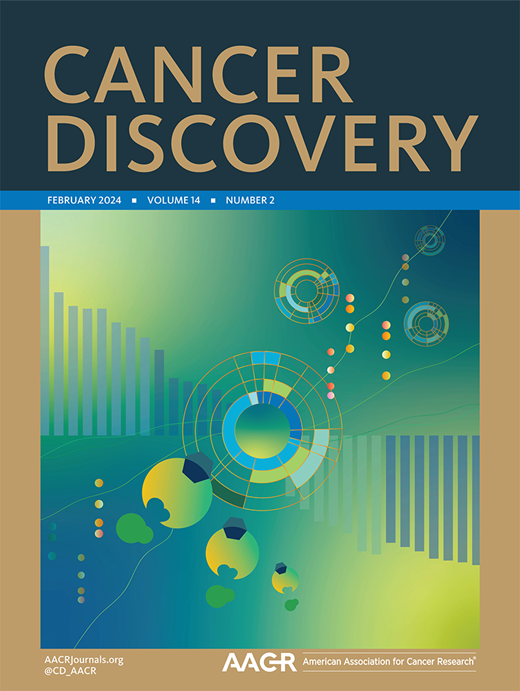Epigenetic regulation of chromosomal instability by EZH2 methyltransferase.
IF 33.3
1区 医学
Q1 ONCOLOGY
引用次数: 0
Abstract
Chromosomal instability (CIN) and epigenetic reprogramming are central drivers of breast cancer progression, yet the mechanisms connecting them remain elusive. We uncover a direct role of EZH2 histone methyltransferase in promoting CIN in triple-negative breast cancer (TNBC). Across breast cancers, EZH2 expression correlates with copy number alterations, and its catalytic activity is associated with increased CIN in metastasis-initiating cells. Pharmacological EZH2 inhibition suppressed CIN, revealing an unexpected vulnerability. Integrated chromatin and transcriptome profiling identified Tankyrase (TNKS), a poly(ADP-ribose) polymerase, as a direct transcriptional target of EZH2. Mechanistically, EZH2-mediated TNKS suppression disrupts CPAP (centrosomal P4.1-associated protein), driving centrosome overduplication, multipolar mitosis and exacerbated CIN. In vivo, CIN suppression is a critical mechanism underlying the anti-metastatic effects of EZH2 inhibition. These findings delineate a previously unrecognized epigenetic mechanism governing CIN and establish EZH2 inhibitors as the first therapeutic agents capable of directly suppressing CIN, underscoring the need for trials with metastasis-focused endpoints.EZH2甲基转移酶对染色体不稳定性的表观遗传调控。
染色体不稳定性(CIN)和表观遗传重编程是乳腺癌进展的核心驱动因素,但它们之间的联系机制仍然难以捉摸。我们发现EZH2组蛋白甲基转移酶在三阴性乳腺癌(TNBC)中促进CIN的直接作用。在乳腺癌中,EZH2的表达与拷贝数的改变有关,其催化活性与转移起始细胞中CIN的增加有关。药理EZH2抑制抑制CIN,揭示出意想不到的脆弱性。综合染色质和转录组分析鉴定了Tankyrase (TNKS),一种聚(adp -核糖)聚合酶,作为EZH2的直接转录靶点。在机制上,ezh2介导的TNKS抑制破坏CPAP(中心体p4.1相关蛋白),驱动中心体过度复制,多极有丝分裂和加剧CIN。在体内,抑制CIN是抑制EZH2抗转移作用的关键机制。这些发现描述了一种以前未被认识到的控制CIN的表观遗传机制,并确立了EZH2抑制剂作为第一种能够直接抑制CIN的治疗药物,强调了以转移为中心的终点进行试验的必要性。
本文章由计算机程序翻译,如有差异,请以英文原文为准。
求助全文
约1分钟内获得全文
求助全文
来源期刊

Cancer discovery
ONCOLOGY-
CiteScore
22.90
自引率
1.40%
发文量
838
审稿时长
6-12 weeks
期刊介绍:
Cancer Discovery publishes high-impact, peer-reviewed articles detailing significant advances in both research and clinical trials. Serving as a premier cancer information resource, the journal also features Review Articles, Perspectives, Commentaries, News stories, and Research Watch summaries to keep readers abreast of the latest findings in the field. Covering a wide range of topics, from laboratory research to clinical trials and epidemiologic studies, Cancer Discovery spans the entire spectrum of cancer research and medicine.
 求助内容:
求助内容: 应助结果提醒方式:
应助结果提醒方式:


